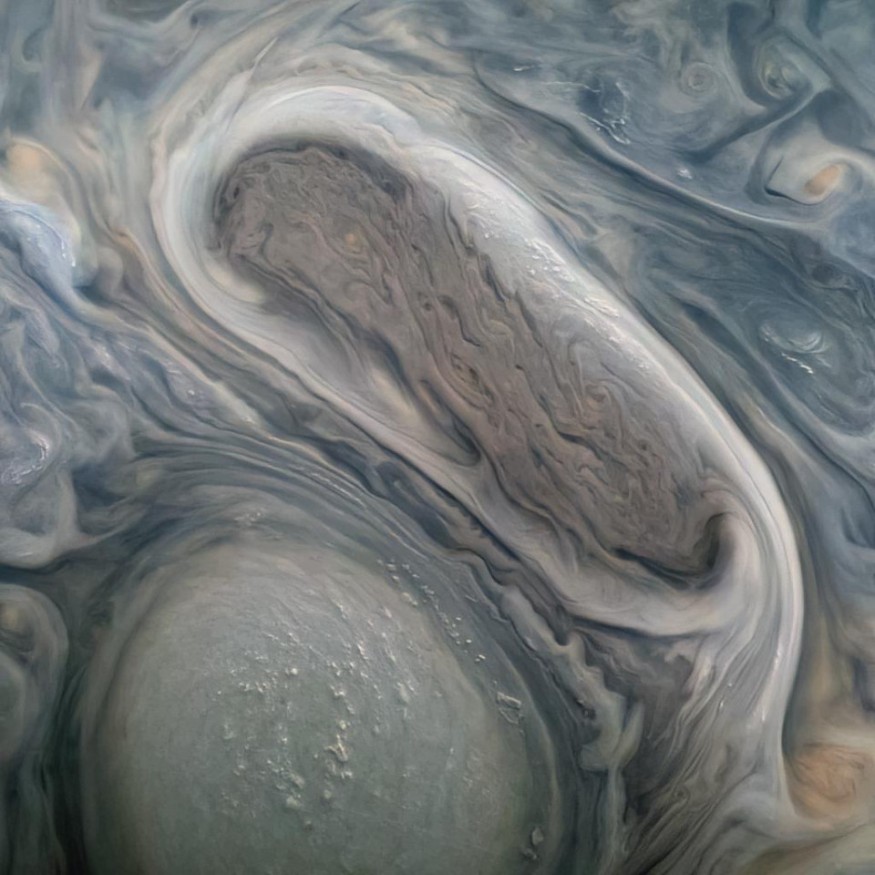Scientists might solve the peculiar atmosphere of Jupiter if the gas giant developed four times further away from the sun than it is now.
Since NASA's Galileo mission in the 1990s, scientists have known that the atmosphere of the solar system's most giant planet includes heavier chemical elements, elements with more protons in their cores, than the sun.
That implies Jupiter's atmosphere has a more significant proportion of heavier elements than the stuff that produced the planet 4.5 billion years ago. In Jupiter's atmosphere, there are more oxygen or carbon atoms per hydrogen atom than in the sun.
Researchers detailed the claim in a study, "Enrichment of Jupiter's Atmosphere by Late Planetesimal Bombardment," uploaded on the online repository arXiv.org.

Jupiter Too Far Away To Understand, Researchers Say
The new study used computer simulations of planetary formation to discover that a Jupiter produced so far from the sun would reach precisely the proper size to attract a large number of planetesimals, as astronomers call them. Planetary embryos originate in the same debris disks as planets but much later in creating a system.
Ravit Helled, a planetary scientist at the University of Zürich in Switzerland and co-author of the study, said Jupiter could have accreted enough material during the final stages of its formation if the planet migrated from 20 astronomical units to where it is now at five astronomical units.
ALSO READ : Real-Life Tatooine of 'Star Wars' Discovered, Here's How Astronomers Found the Planet With Two Suns
"You don't actually have to accrete too much material; you just need to accrete it late enough," he told Space.com.
The importance of late accretion cannot be overstated. If the planetesimals collided with Jupiter too soon, the heavier elements they carried would have collected closer to the planet's core, where they would have been undetectable to the Galileo expedition.
Even stranger, the current NASA mission to Jupiter, Juno, has produced measurements of Jupiter's gravity field, or fluctuations in the planet's gravitational forces, that do not appear to match Galileo's observations.
Because the entire planet is not mixed up properly, Helled noted, such heavy elements would only linger in the higher layers of the planet's atmosphere following the planetesimal collisions.
Jupiter Atmosphere Have Few Heavy Things
According to the same Space.com report, researchers discovered that structural models that suit Jupiter's gravitational field, as observed by Juno, imply that the planet's outermost regions should have few heavy elements. Helled said many rich features don't belong in the gravitational field.
Scientists still don't know about the history of the solar system's largest planet, but learning more about Jupiter's origin can help us better comprehend the formation of giant planets surrounding other stars, according to Helled.
RELATED ARTICLE : Planety Mystery Behind Saturn's Bright Aurora Borealis Finally Resolved
Check out more news and information on Space in Science Times.
© 2026 ScienceTimes.com All rights reserved. Do not reproduce without permission. The window to the world of Science Times.












